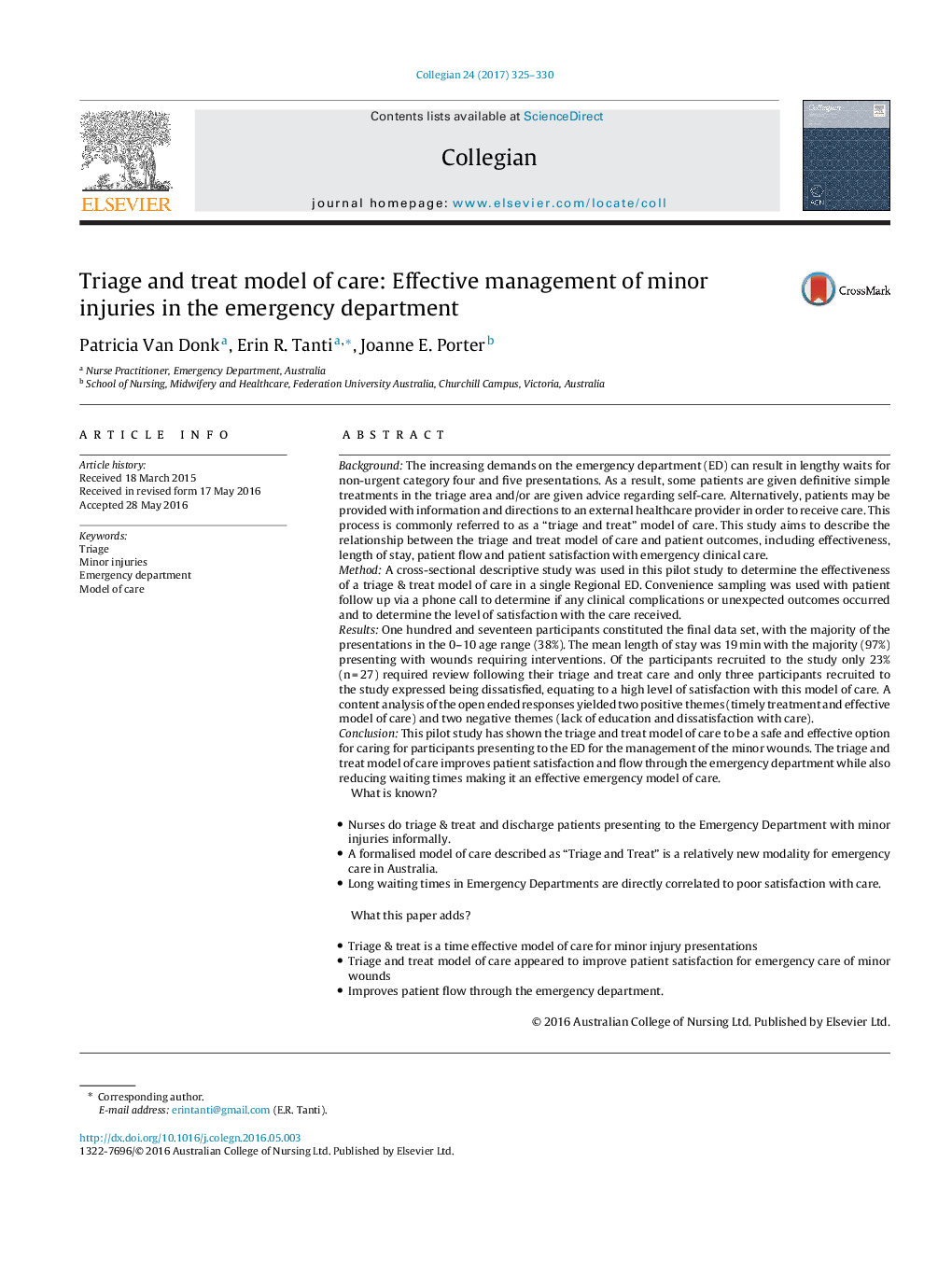| Article ID | Journal | Published Year | Pages | File Type |
|---|---|---|---|---|
| 5567683 | Collegian | 2017 | 6 Pages |
BackgroundThe increasing demands on the emergency department (ED) can result in lengthy waits for non-urgent category four and five presentations. As a result, some patients are given definitive simple treatments in the triage area and/or are given advice regarding self-care. Alternatively, patients may be provided with information and directions to an external healthcare provider in order to receive care. This process is commonly referred to as a “triage and treat” model of care. This study aims to describe the relationship between the triage and treat model of care and patient outcomes, including effectiveness, length of stay, patient flow and patient satisfaction with emergency clinical care.MethodA cross-sectional descriptive study was used in this pilot study to determine the effectiveness of a triage & treat model of care in a single Regional ED. Convenience sampling was used with patient follow up via a phone call to determine if any clinical complications or unexpected outcomes occurred and to determine the level of satisfaction with the care received.ResultsOne hundred and seventeen participants constituted the final data set, with the majority of the presentations in the 0-10 age range (38%). The mean length of stay was 19 min with the majority (97%) presenting with wounds requiring interventions. Of the participants recruited to the study only 23% (n = 27) required review following their triage and treat care and only three participants recruited to the study expressed being dissatisfied, equating to a high level of satisfaction with this model of care. A content analysis of the open ended responses yielded two positive themes (timely treatment and effective model of care) and two negative themes (lack of education and dissatisfaction with care).ConclusionThis pilot study has shown the triage and treat model of care to be a safe and effective option for caring for participants presenting to the ED for the management of the minor wounds. The triage and treat model of care improves patient satisfaction and flow through the emergency department while also reducing waiting times making it an effective emergency model of care.What is known?â¢Nurses do triage & treat and discharge patients presenting to the Emergency Department with minor injuries informally.â¢A formalised model of care described as “Triage and Treat” is a relatively new modality for emergency care in Australia.â¢Long waiting times in Emergency Departments are directly correlated to poor satisfaction with care.What this paper adds?â¢Triage & treat is a time effective model of care for minor injury presentationsâ¢Triage and treat model of care appeared to improve patient satisfaction for emergency care of minor woundsâ¢Improves patient flow through the emergency department.
